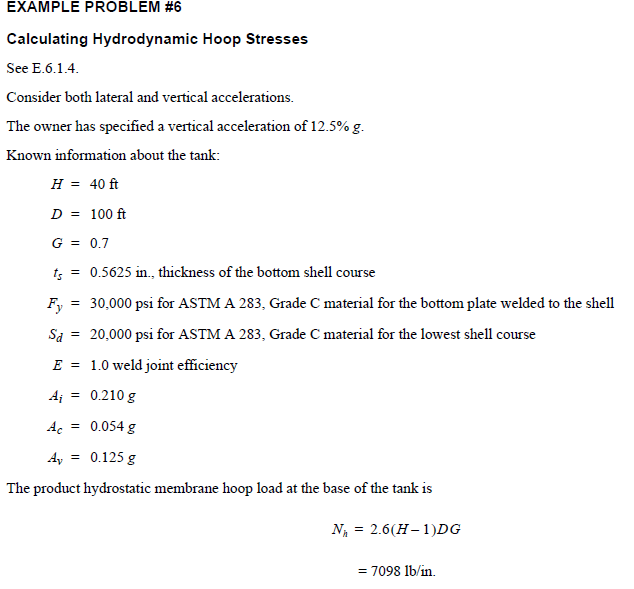In Annex E section E.6.1.4 (Dynamic Liquid Hoop Forces), how do we calculate the value of Y?
(Here, Y = Distance from the liquid surface to analysis point, (positive down), unit: m (ft)).
I don't know how to find out the 'analysis point'. Can anyone please help me with this?
(Here, Y = Distance from the liquid surface to analysis point, (positive down), unit: m (ft)).
I don't know how to find out the 'analysis point'. Can anyone please help me with this?


